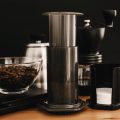Introduction and Methodology
Coffee culture in the UK has undergone a remarkable transformation over the past decade, moving beyond instant coffee to embrace a wide array of brewing methods. In this context, understanding the cost implications of different brewing techniques is increasingly relevant for both casual drinkers and dedicated enthusiasts. This comparative cost analysis aims to provide clear insights into how the French press stacks up against other popular brewing methods commonly found in British homes and cafés, such as pour-over, espresso machines, pod systems, and stovetop moka pots.
To ensure this analysis reflects real-world scenarios, we have selected brewing methods that are widely available and regularly used across the UK. The focus will be on both initial investment (equipment costs) and ongoing expenses (coffee beans, filters, energy consumption, and maintenance). The methodology combines current market prices from reputable UK retailers with typical usage patterns based on national surveys and consumer reports. Additionally, this article considers how these costs interact with uniquely British habits—like daily morning brews at home or the growing popularity of speciality coffee shops—so that readers can make informed decisions rooted in local practice.
Overview of Brewing Methods in the UK
The UK coffee scene has evolved rapidly over the past decade, with a growing appetite for quality brews and diverse preparation methods. While traditional tea culture still holds sway, coffee has firmly established its place in British daily life. This section provides an overview of the most popular brewing methods currently found across UK homes and cafés, setting the stage for a comparative cost analysis.
French Press (Cafetiere)
Known locally as the cafetiere, the French Press remains a staple in British households. It is celebrated for its simplicity, affordability, and ability to brew multiple cups at once without requiring electricity or complicated equipment. The cafetiere is particularly popular among those who appreciate a robust, full-bodied cup of coffee without excessive fuss.
Filter Coffee
Filter coffee machines are a common sight in UK kitchens and offices alike. These devices offer convenience and consistency, making them ideal for preparing larger batches. They utilise ground coffee placed in a paper or reusable filter, producing a clean-tasting brew that appeals to those who enjoy lighter-bodied coffee.
Pod Machines
Pod machines such as Nespresso and Tassimo have surged in popularity due to their ease of use and minimal clean-up. These systems use pre-packaged pods or capsules, offering a wide variety of coffee styles at the touch of a button. However, this convenience often comes at a higher ongoing cost per cup.
Espresso Machines
For enthusiasts seeking café-quality coffee at home, espresso machines have become increasingly accessible. These range from manual lever machines to fully automatic models, allowing users to craft espressos, lattes, and cappuccinos with varying degrees of skill and investment. Despite their higher upfront cost, many consider them essential for replicating barista-level drinks.
Comparison Table: Popular UK Brewing Methods
| Brewing Method | Common Names | Main Features | Typical Usage |
|---|---|---|---|
| French Press | Cafetiere | Manual, no electricity needed, brews several cups | Home & small gatherings |
| Filter Coffee Machine | – | Electric, large batch brewing, uses filters | Home & office settings |
| Pod Machine | Nespresso, Tassimo etc. | Single-serve pods/capsules, minimal effort | Home & quick service areas |
| Espresso Machine | – | Semi/fully automatic or manual; high pressure extraction | Coffee enthusiasts & home baristas |
This overview highlights how brewing preferences in the UK reflect both cultural traditions and modern lifestyles. Each method brings unique advantages that influence not only taste but also cost—a subject explored further in subsequent sections.

3. Upfront Equipment Costs
When considering which brewing method to adopt, the upfront equipment costs play a significant role in long-term value and accessibility for coffee enthusiasts in the UK. The French press, often referred to as a cafetière locally, is widely available in supermarkets and high street retailers such as John Lewis, Argos, and Tesco. Entry-level models can be purchased for as little as £10-£15, while more robust glass or stainless-steel versions from reputable brands like Bodum typically range from £20 to £40. In contrast, pour-over equipment—such as V60 drippers—costs between £7 and £25, but requires additional investment in paper filters. AeroPress devices are also readily available and retail at around £30-£35. Espresso machines present a much steeper initial outlay; even basic home models start at approximately £80-£100, with mid-range or semi-professional options easily exceeding £250. Pod-based systems (like Nespresso) are commonly promoted on the UK market, starting from roughly £50 but often bundled with sample pods to entice new users. Stovetop moka pots, a traditional favourite, can be found for about £15-£30 depending on the brand and size. Across all methods, availability is generally high both online and in physical shops throughout the UK, making price rather than access the primary differentiator for most consumers weighing their options.
4. Ongoing Running Costs
When evaluating the true cost of brewing coffee at home in the UK, it is crucial to consider not just the upfront investment but also the ongoing running costs. These recurring expenses include coffee beans, filters or pods, energy consumption, and regular maintenance. Each brewing method incurs distinct costs over time, which can significantly influence overall value for money for British households.
Coffee Beans and Consumables
The cost of coffee beans is a common denominator across all manual brewing methods, yet the amount required per cup may vary. A French press typically uses coarser grounds and requires slightly more coffee per serving than an espresso machine, but less than some pod systems. Single-serve pod machines (like Nespresso or Tassimo) rely on proprietary capsules, often costing considerably more per cup compared to buying whole or ground beans. Drip filter machines require paper filters, while bean-to-cup and espresso machines do not.
| Method | Beans/Pods (£/cup) | Filters/Pods (£/cup) |
|---|---|---|
| French Press | £0.18–£0.30 | N/A |
| Drip Filter | £0.15–£0.25 | £0.03–£0.05 |
| Espresso Machine | £0.20–£0.35 | N/A |
| Pod Machine | N/A | £0.30–£0.45 (per pod) |
Energy Usage in the UK Context
The average UK household pays close attention to energy bills, making electricity consumption an important consideration. French presses require only boiling water—often using a standard electric kettle—so their energy use per cup is relatively low. Drip filter and espresso machines consume more power due to warming plates or pumps; pod machines are usually quick but can be less efficient if used frequently throughout the day.
| Method | Average Energy Use (kWh/cup) | Approximate Cost (£/cup)* |
|---|---|---|
| French Press (Kettle) | 0.03–0.05 | £0.01–£0.02 |
| Drip Filter Machine | 0.04–0.07 | £0.01–£0.03 |
| Espresso Machine | 0.06–0.09 | £0.02–£0.04 |
| Pod Machine | 0.04–0.08 | £0.01–£0.03 |
| *Based on 2024 Ofgem average domestic electricity rates. | ||
Maintenance & Cleaning Expenses
The long-term maintenance required by each brewing method can also add up over time—especially when considering hard water areas common in the UK:
- French Press: Minimal maintenance; occasional replacement of mesh filters (£5–£10/year).
- Drip Filter Machines: Need descaling tablets and periodic filter changes (£10–£20/year).
- Espresso Machines: Require regular descaling and cleaning solutions (£15–£30/year), plus possible professional servicing.
- Pod Machines: Usually need occasional descaling and cleaning cycles (£10–£15/year).
Total Estimated Recurring Costs per Year (Typical UK Household)
| Brew Method | Coffee (Beans/Pods) | Filters/Pods/Sundries | Energy Use* | Maintenance/Cleaning** |
|---|---|---|---|---|
| French Press | £66–£110 | N/A | ~£7 | ~£7 |
| Drip Filter | £55–£91 | ~£13 | ~£11 | ~£15 |
| Espresso Machine | £73–£128 | N/A | ~£15 | ~£23 |
| Pod Machine | N/A | ~£110–£165 | ~£11 | ~£13 |
*Energy estimates based on two cups daily per year.
**Maintenance includes descaling agents and small replacement parts where relevant.
In summary, while French press brewing remains one of the most economical choices for ongoing costs—particularly with regard to consumables and maintenance—pod-based systems tend to have higher annual expenditures due to their reliance on single-use capsules typical in many UK homes.
5. Cost Comparison: Home vs. Café
When evaluating the true cost of coffee, one must weigh the expense of brewing at home against frequenting local cafés—a particularly relevant consideration in the UK, where café culture thrives. The price of a standard takeaway coffee in most British high streets typically ranges from £2.50 to £3.50 for a regular flat white or Americano, with speciality drinks or artisan roasters often exceeding £4 per cup. In contrast, brewing coffee at home using a French press or alternative methods offers substantial cost savings after the initial investment in equipment.
The upfront cost for a decent French press averages around £15–£30, while a bag of quality ground coffee (suitable for French press) costs about £4–£8 and provides roughly 15–20 servings. This equates to around 25–50 pence per cup, not accounting for milk, sugar, or energy costs—which are negligible by comparison. Other popular home methods like pour-over (requiring filters) or espresso machines (with higher equipment costs) vary slightly but still consistently undercut the price of café-bought coffee over time.
For those who purchase coffee daily on their commute or during breaks, the annual expenditure can easily surpass £700–£1,000. In contrast, even with premium beans and occasional replacement of equipment, home brewing rarely approaches these figures. Thus, while cafés offer convenience and atmosphere—alongside expertly prepared drinks—the economic advantage clearly favours home preparation for regular consumers in the UK context.
6. Environmental and Practical Considerations
When weighing up the comparative costs of coffee brewing methods in the UK, environmental impact and day-to-day practicality are increasingly important factors for local consumers. The French press stands out as a low-waste option, requiring only ground coffee and hot water, with no need for disposable filters or pods. This aligns well with UK priorities around sustainability, as many households are actively reducing single-use plastics and unnecessary packaging.
In contrast, pod-based machines—while convenient—generate significant waste through single-use capsules. Even with recycling schemes offered by some brands, uptake remains modest in the UK due to logistical barriers and consumer habits. Drip machines often rely on paper filters, which are biodegradable but still represent a recurring purchase and additional waste stream. Espresso machines can be resource-intensive in terms of water and electricity use, especially when considering heat-up times and cleaning cycles.
From a practical perspective, the French press is valued for its simplicity: it requires minimal setup, is easy to clean, and is not reliant on proprietary consumables or electricity (beyond boiling water). This resonates with UK consumers who prize reliability and ease of maintenance—attributes particularly appealing in smaller kitchens or shared accommodation typical across the country.
In summary, while upfront and ongoing costs are major considerations, UK buyers are also increasingly factoring in sustainability credentials and everyday usability when choosing a brewing method. The French press continues to appeal for its balance of low environmental footprint, straightforward use, and alignment with broader trends in eco-conscious living.
7. Conclusion and Recommendations
Our comparative cost analysis of French press brewing versus other popular methods in the UK, including drip machines, pod systems, and espresso makers, reveals several important insights for coffee enthusiasts and households alike. The French press consistently offers a low upfront investment and minimal recurring costs, making it an excellent choice for those on a budget or seeking simplicity without compromising on flavour. Drip machines and pod systems, while convenient, often involve higher ongoing expenses due to filters or proprietary pods—factors that may add up over time. Espresso machines represent the highest initial outlay and maintenance costs but can be justifiable for aficionados who value café-style drinks at home.
Key Takeaways
- Cost-Efficiency: The French press stands out as the most cost-effective method for both short- and long-term use.
- Lifestyle Fit: For busy urbanites or those with limited kitchen space, pod systems offer speed but at a premium price per cup. Families or shared homes may benefit from the capacity of drip machines despite moderate recurring costs.
- Taste Preference: If robust flavours and full-bodied brews are preferred, the French press or espresso machine will deliver best, though the latter requires more investment and skill.
Recommendations Tailored to UK Lifestyles
- Students & Young Professionals: Choose a French press for affordability, portability, and ease of cleaning—ideal for flat shares or small kitchens.
- Busy Commuters: Pod systems provide unmatched convenience but be mindful of long-term costs; consider them only if time-saving outweighs budgeting concerns.
- Coffee Aficionados: If budget allows and daily ritual is key, investing in an espresso machine pays off over years—particularly for those who would otherwise frequent high street coffee shops.
- Families & Offices: Large drip machines serve multiple people efficiently; however, factor in filter replacements when budgeting.
Final Thoughts
No single brewing method fits all. Balancing upfront costs, ongoing expenses, taste preferences, and lifestyle requirements ensures you select the most suitable coffee solution. In most cases across UK households, the French press emerges as a reliable and economical choice—but there is ample room to tailor your setup based on individual needs and financial considerations.


